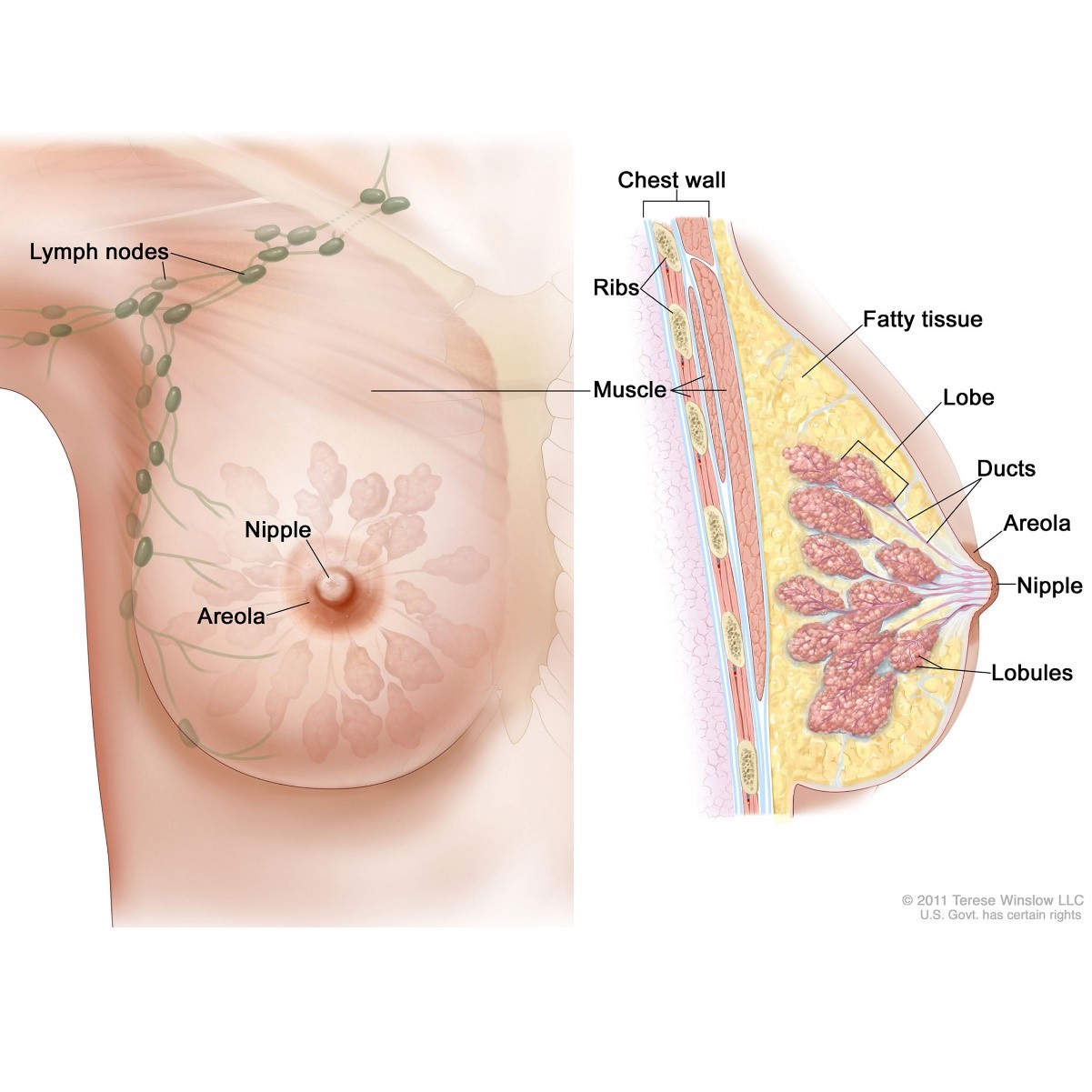Mastectomy

Modified radical mastectomy: In this method, all breast tissue, including the nipple and the surrounding areola and part of the axillary lymph nodes, is removed, and the pectoral muscles are left intact.
Total mastectomy: Similar to radical surgery, in which all breast tissue is removed but the axillary lymph nodes are left intact.
Breast-conserving surgery: Complete removal of the tumor with part of the surrounding healthy margin, while maintaining the appearance and beauty of the breast
Necessary nursing interventions:
*Acute pain due to surgery1
1. Assess the patient's pain level and pattern
2. Assess the surgical site for infection and hematoma, as these factors can increase pain.
3. Sometimes patients experience increased pain at the incision site a few days after surgery, which is due to the return of sensation in the areas around the surgery.
4. Use of distraction and relaxation methods
5. Use of prescribed painkillers
*Disruption in mental image of oneself due to removal of all or part of the breast
1. Mental preparation and support of the patient during removal of the first dressing
2. Creating a private and suitable environment for removing the dressing
3. Creating a suitable environment for the patient to express and pay attention to their feelings
4. Encouraging the patient to use artificial breast prostheses to maintain a proper appearance
5. Some patients experience an imaginary limb sensation after surgery, which lasts for a few months and then decreases
*Risk of possible complications (lymphedema - hematoma and infection)
*Lymphedema:
1. Lymphedema occurs in 10-30% of patients who have undergone lymph node removal surgery.
2. Encourage the patient to do recommended hand exercises from 2 days after surgery
3. Do not take blood pressure, blood samples, and IV therapy in the affected hand. Install a warning sign above the patient's bed and educate the patient on this issue
4. Regularly monitor the surgical site and fingers for the first 24 hours
* Hematoma formation:
1. Hematoma usually develops within 24 hours after surgery.
2. Examine the surgical site for the presence of hematoma (swelling, tenderness, stiffness, skin bruising, and pain)
3. Examine and chart the amount of wound drainage (inform the doctor if there is no or excessive drainage)
4. Examine for signs of wound infection and inform the doctor if there are any symptoms (fever, redness, warmth, swelling of the operated area, and increased discharge)
Instructions during hospitalization:
1. Starting a diet and walking usually occurs 24 hours after surgery, according to the surgeon's opinion. Activity and exercise should not be to the extent that it causes pain.
2. Provide correct and sufficient information regarding the treatment process (radiotherapy and chemotherapy) to the patient and his family
Instructions during discharge:
1- Refer to medical centers and doctors to remove the drain 7-10 days after the operation
2- Avoid taking blood pressure and injecting serum and taking samples from the affected arm
3- Avoid lifting objects weighing more than 5.2 kilograms for 4-6 weeks
4- Change the dressing until the drain is removed in a sterile manner
5- Usually after discharge (according to the surgeon's opinion) you can take a shower and after bathing, put a dry dressing on the area.
6- Walking - stationary bike and stretching exercises can be started after discharge and recovery.
7- The following exercises should be taught to the patient to return sensation and movement to the affected side to their original state, twice a day for 20 minutes each time for the first 4-6 weeks after surgery.
Prophylactic bilateral mastectomy in women with BRCA1 or BRCA2 genes
Nursing diagnoses
• Body image disturbance
• Anticipatory grief
• Sexual relationship pattern disturbance
Nursing interventions
Allow the patient to express their concerns and questions about the treatment plan
Monitor the incision site, dressing, and discharge
Check for signs and symptoms of infection
Instructions during hospitalization
Description of the disease
How to use the affected hand
Use of analgesics, timing, and side effects of analgesics
Need for follow-up mammography
Low-fat diet
Instructions during discharge and after discharge:
- Refer to medical centers and doctors for drain removal 7-10 days after surgery
2- Avoid taking blood pressure and serum injections and taking samples from the affected hand
3- Avoid lifting objects weighing more than 5.2 kg for 4-6 weeks
4- Dressing changes should be done sterilely until the drain is removed.
5- Usually, after discharge (according to the surgeon's opinion), you can take a shower and after bathing, put a dry dressing on the area.
6- Walking - stationary bike and stretching exercises can be started after discharge and recovery.
7- The following exercises should be taught to the patient to return the sensation and movement of the affected side to the original state, 2 times a day for 20 minutes each time for the first 4-6 weeks after surgery.